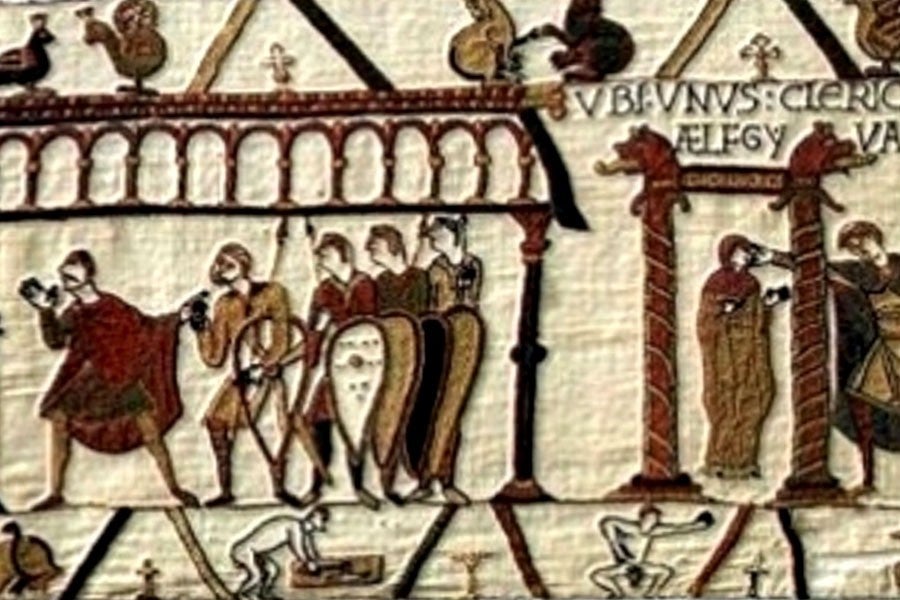The Bayeux Tapestry, which actually a 230-foot long cloth embroidery, dates to the 11th century and narrates, in a sequence of images, the Norman conquest of England in the year 1066.
But have you ever looked at all the dicks on it?
Take a gander at this detail — paying specific attention to the little guy on the bottom. Check out that dick right there.
Wow. He’s just letting it all hang out. No shame. “But,” I can already hear you saying, “why should I care about that dude’s dick? Isn’t the nude male figure common throughout art history?”
Well, smartass, it just so happens that nobody paid much attention to what was happening on this document, dickwise, until George Garnett, a professor of medieval history at the University of Oxford, counted up every dick it depicts.
He found 93 in all, but just a handful belong to human males, most of whom are peripheral characters that allude to Aesop’s fables and suggest “themes of betrayal and deceit which are central to the tapestry’s account of the Norman invasion of England.” The other 88 dicks are equine, which is to say attached to horses.
You can see one on the right:
The horse dicks, Garnett says, are interesting because they appear to convey the manliness of whoever’s riding them, strongly correlating virility with size. “And the largest equine penis by far,” he writes, “is that protruding from the horse presented by a groom to a figure who must be Duke William, just prior to the battle of Hastings.”
That a big dick equals an impressive dude is perhaps a tired cliché in our porn-saturated century, but the idea runs counter to the notions of Greek antiquity, during which massive dicks were grotesque markers of base men ruled by their appetites, while guys with teensy dicks lived on a higher intellectual and spiritual level, above the matters of mere flesh. So statues of that period are conventionally not-so-well endowed.
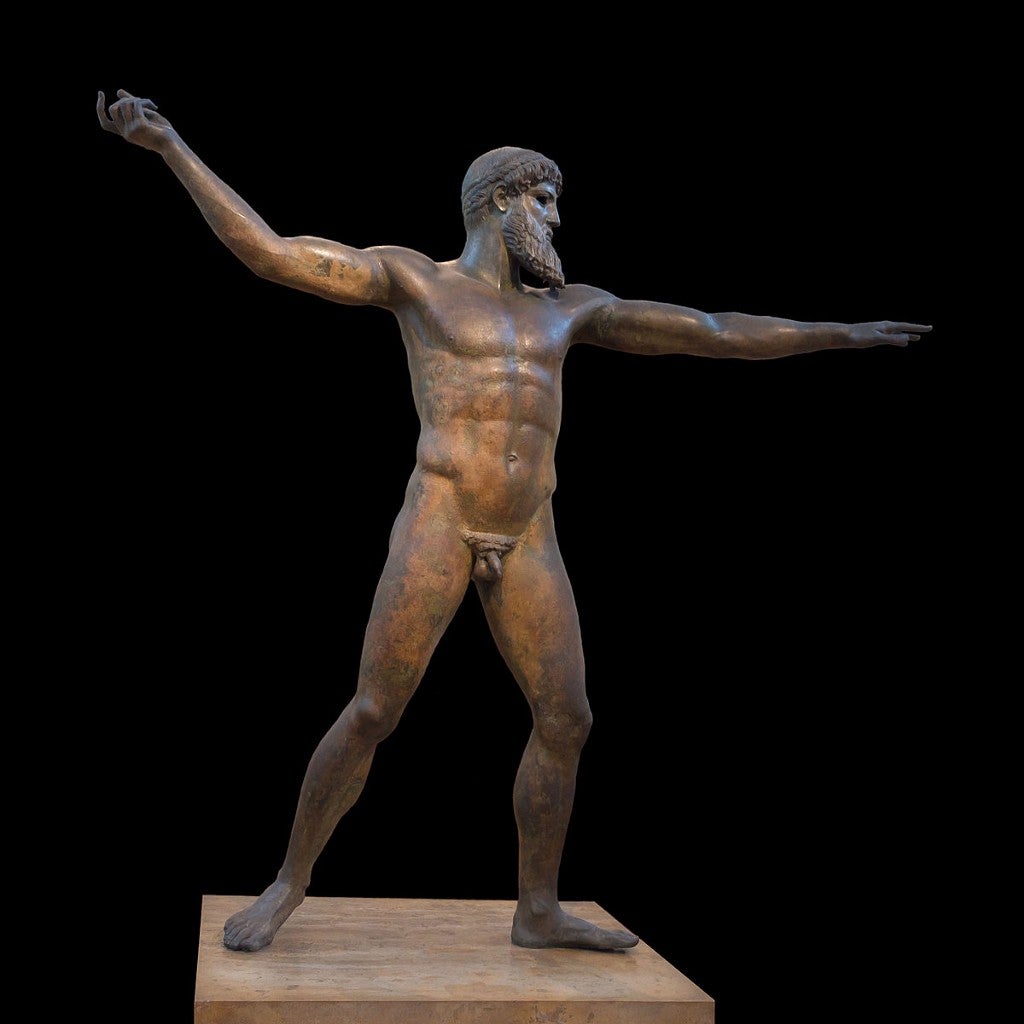
The Bayeux Tapestry, then, is a cool example of how the “ideal” dick fluctuates over the centuries and across cultures.
From the meaty, veiny, exaggerated members of Edo-era Japan…
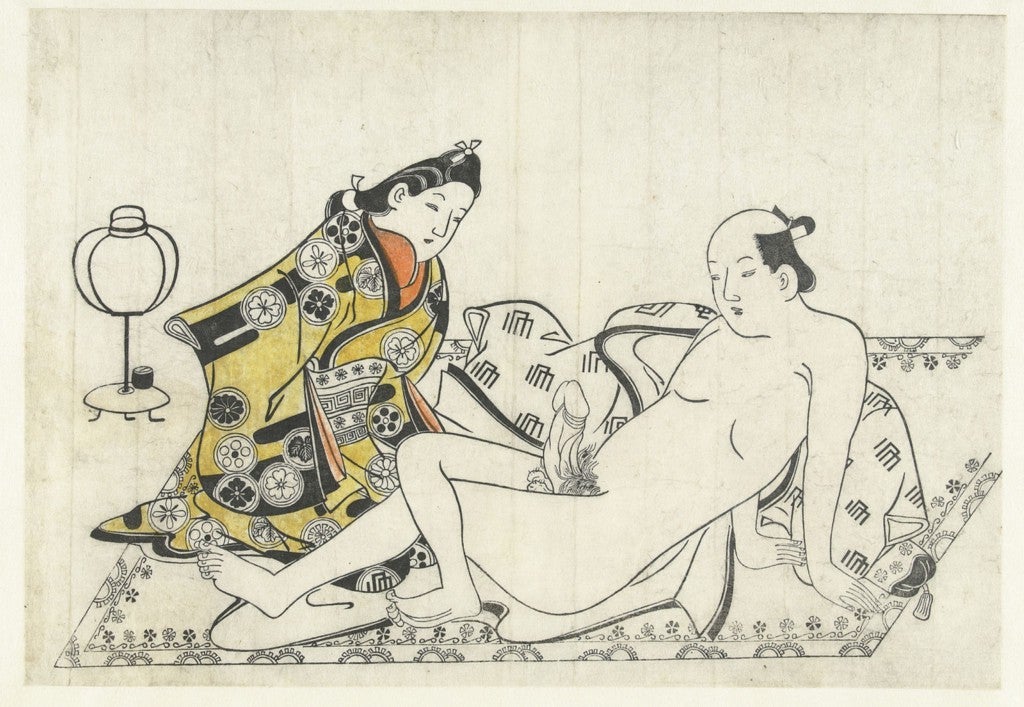
…to the varied schlongs of the Kama Sutra, which emphasized compatibility over any single aesthetic.
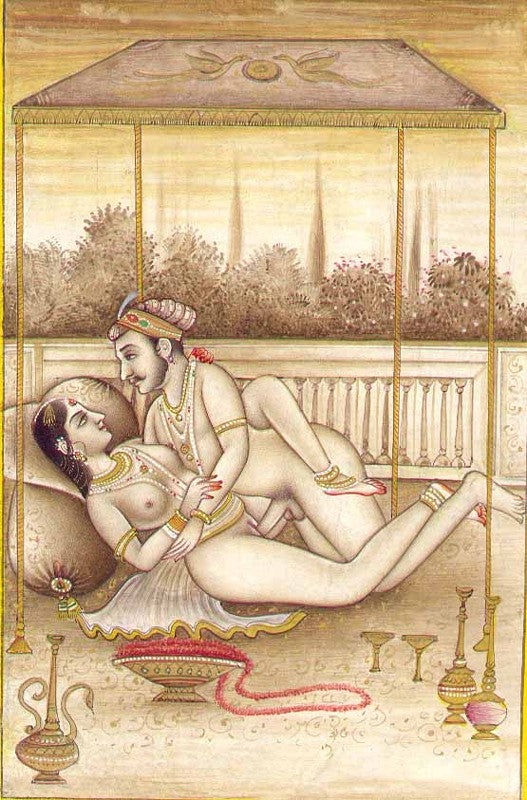
Certainly it seems to have presaged a more whimsical usage of dick imagery throughout the Middle Ages, such as this 14th-century penis tree.
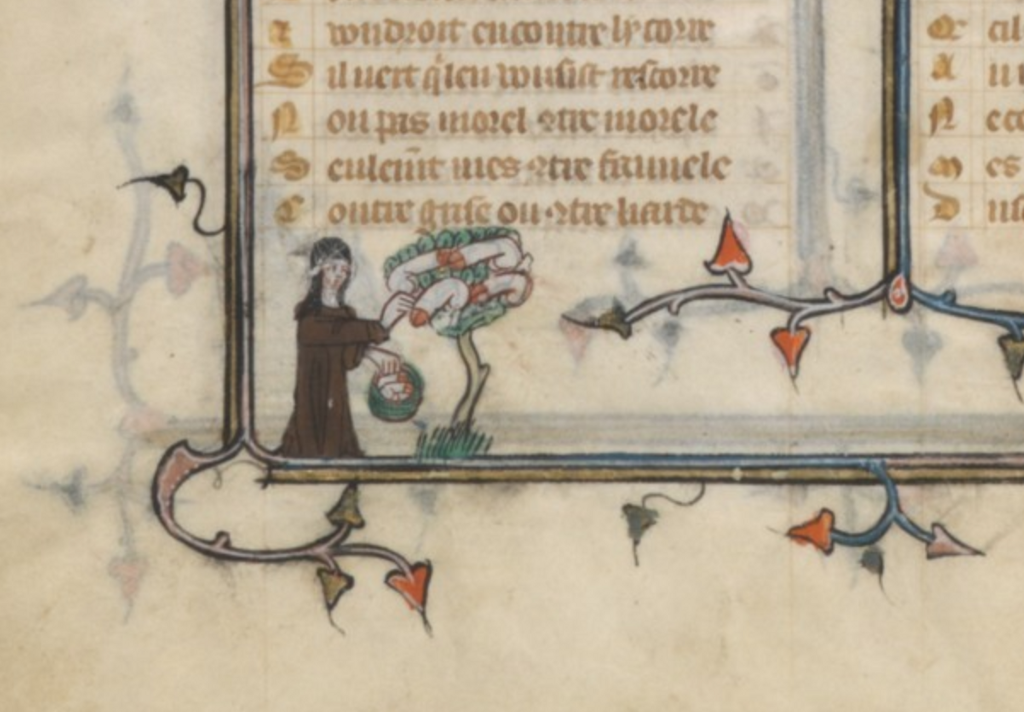
Anyway, it goes to show you: In art, a dick is never just a dick. And a painted (or embroidered) dick reflects something more intimate than a cultural anxiety or societal value. When a dude draws dicks everywhere, it’s typically to assert his own masculine power. “Keeping a tally of penises” in the Bayeux Tapestry, Garnett argues, “reveals that the designer of the tapestry had a hitherto unremarked obsession of his own.”
And it clearly wasn’t vaginas.
